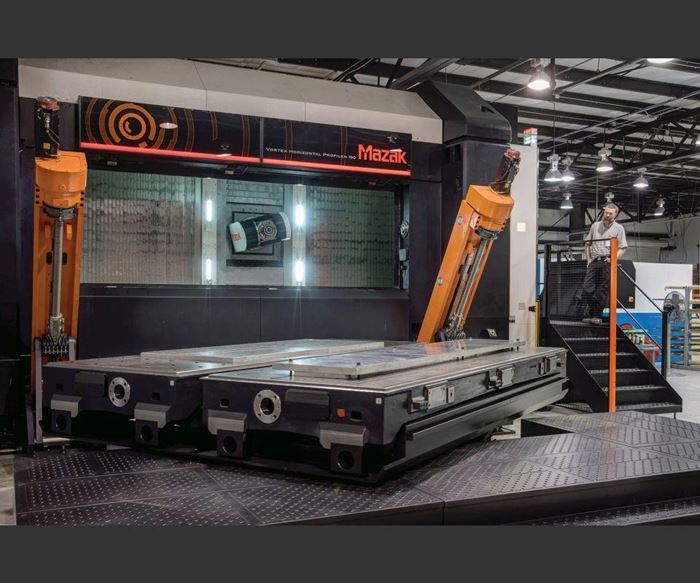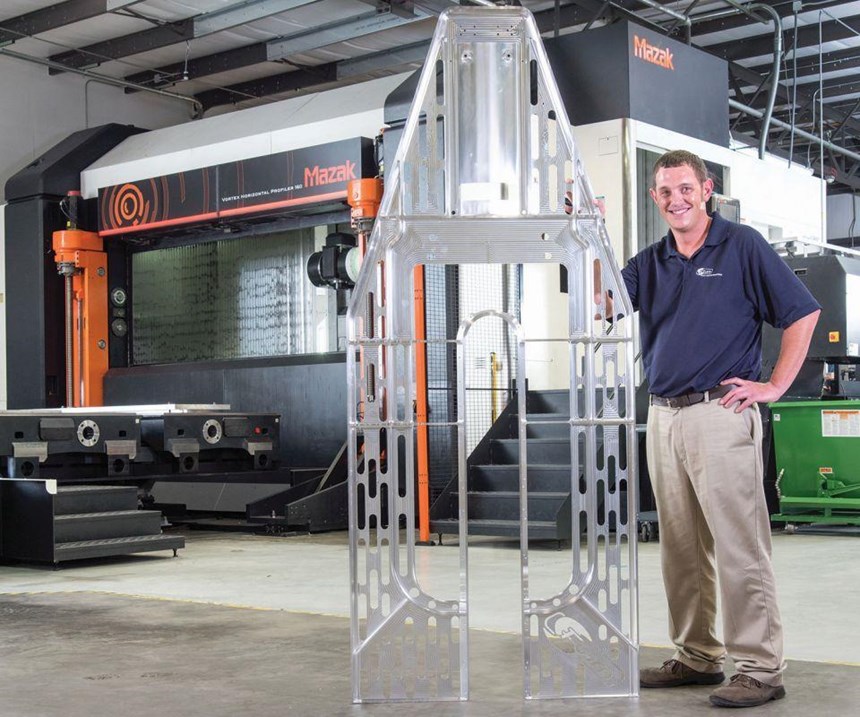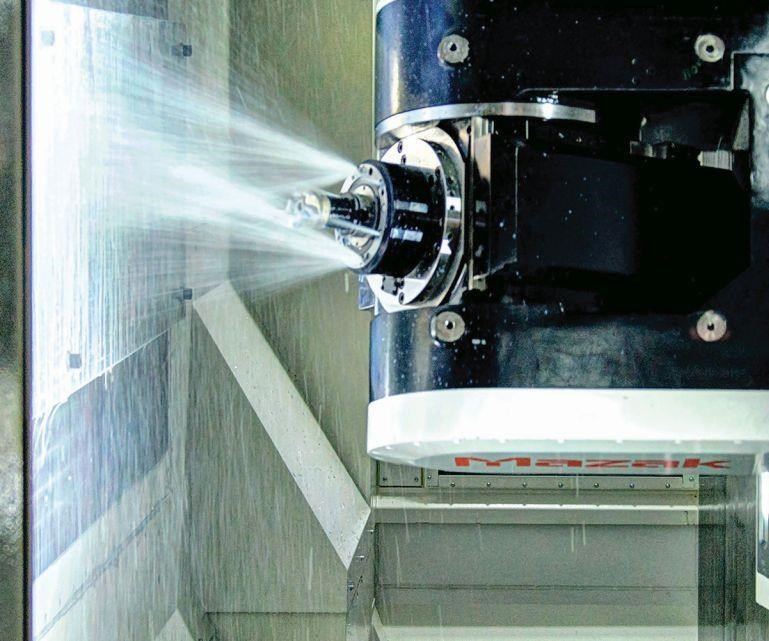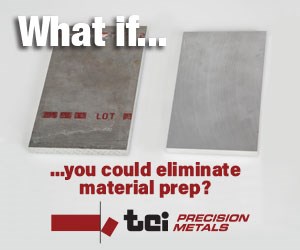Precision Profiler Opens Chances for Larger Aerospace Parts
Fort Walton Machining could only process smaller aerospace parts without investing in large, expensive-to-operate equipment. Mazak's Vortex 160 horizontal profiler increased the shop's part size capabilities.
Share





In today’s aerospace market, shops typically have two options: Cut aircraft structural components shorter than 11 feet long using five-axis machining centers or purchase expensive-to-operate gantry-type equipment to reach beyond that size limitation to 22-feet long, says Greg Britton, CEO of Fort Walton Machining. Not satisfied with either option, the company recently acquired an advanced profiling machine system from Mazak Corp. (Florence, Kentucky) that has enabled it to increase its size capabilities while remaining competitively priced.
The shop, located in Fort Walton Beach, Florida, is a high-mix/low-volume supplier with lot sizes ranging from one to 500 parts. Eighty percent of these parts are made from aluminum, with tolerances ranging from 0.030 inch to as tight as 0.00005 inch. It also machines carbon steels, aircraft steels, high-temperature alloys and titanium. Its aircraft/aerospace work encompasses cargo-handling systems, floor supports and airframe components, as well as brackets and other smaller parts. In addition to aerospace work, Fort Walton Machining produces medical equipment parts and does general machining work.
While jobs can be diverse, the common denominator is the high level of required quality and precision. The company must provide these, along with fast delivery, to stay ahead of the competition. One way it does this is by investing in advanced technology.
“If we aren’t on the cutting edge technology-wise, our competition will run right over us. Advanced technology is everything to our business,” says Tim McDonald, production manager.
The lion’s share of the company’s machine tool technology is from Mazak. Its more than 20 Mazak machines include various models of Quick Turn Nexus multitasking machines, Variaxis five-axis vertical machining centers, Slant Turn Nexus turning centers and Vertical Center Nexus machining centers.
However, the machine that has enabled Fort Walton Machining to find its niche within the aerospace sector of its business is the Vortex Horizontal Profiler (VHP) 160. Mazak designed it specifically for the aerospace market with a work envelope that can accommodate about 70 percent of common, large-size airframe and aerospace parts. The number of shops that can cost-effectively process such parts is limited, the company says.
Travels measure 165.35 by 59.06 by 21.65 inches in the X, Y and Z axes, and a 106-horsepower, 26,000-rpm, HSK-A63 integral-motor spindle is standard. The large 157-by-49-inch vertically integrated worktable enables the VHP 160 to easily accommodate a maximum load capacity of 6,615 pounds.
Fort Walton Machining can position the machine’s worktable horizontally for quick and easy loading and setup, then return it to a vertical position for machining operations. This vertical orientation makes use of gravity and ensures excellent chip evacuation during high-material-removal operations, the company says.
Fort Walton Machining’s VHP 160 model features two-table-changing capability for continuous, uninterrupted operations. If needed, the shop can expand its single-machine, two-table configuration into a manufacturing cell with the addition of both tables and machines.
The profiler has a special box-type construction that integrates its base, column and table to provide maximum machining rigidity for overall part accuracy. Furthermore, the machine’s symmetrical base/column construction works in conjunction with an advanced coolant and chip disposal system to minimize heat displacement.
For getting into the cut as quickly as possible and shortening overall cycle times, the machine system offers rapid traverse at speeds ranging to 1,380 ipm in the X axis, and 1,176 ipm in both the Y and Z axes with an acceleration/deceleration rate of 0.5 G.
In addition to providing a niche in terms of part-size processing, Fort Walton Machining says the VHP 160 has enhanced its cutting capabilities, particularly in aerospace components that feature deep, thin-walled pockets and require extensive metal removal.
“Anyone can machine a 0.050-inch-thick wall that is only 0.100-inch deep/high,” Mr. McDonald says. “But try holding tolerance, straightness and required surface finish when that thin wall is 3 inches high/deep. It all comes down to your machine’s capabilities—speed, accuracy and rigidity. Without the right machine and tooling running at the right speeds and feeds, you will never succeed.”
The profiler’s speed and accuracy are also critical for achieving superior part finishes, he says. A part’s aesthetics are important to today’s aerospace companies. “While a part may be machined to exact tolerances, sloppy, aesthetically displeasing surface finishes give the impression of imprecision, poor performance and potential part failure,” he says. “Plus, the simple fact is that aircraft components are expensive, especially the larger-size ones, and OEMs want perfection in both functionality and aesthetics. With the VHP 160, we can fulfill both requirements and reduce cost per part through optimized setups, speed and precision.”
While Fort Walton Machining is planning to bring in new work for the profiler, it has initially moved some existing work over to the machine to increase efficiency and reduce cost per part. One such job is a radar shroud that is reduced from 200 pounds of raw stock to only 35 pounds after machining.
“With the VHP 160, we improved part accuracy and achieved seriously shorter run times for the shroud,” says Chad Wisenburger, CNC mill supervisor. “The machine reduced cycle time by 50 percent, and for us, that kind of speed means less time spent, more parts and more profit.”
Related Content
The Future of High Feed Milling in Modern Manufacturing
Achieve higher metal removal rates and enhanced predictability with ISCAR’s advanced high-feed milling tools — optimized for today’s competitive global market.
Read MoreHigh RPM Spindles: 5 Advantages for 5-axis CNC Machines
Explore five crucial ways equipping 5-axis CNC machines with Air Turbine Spindles® can achieve the speeds necessary to overcome manufacturing challenges.
Read More6 Machine Shop Essentials to Stay Competitive
If you want to streamline production and be competitive in the industry, you will need far more than a standard three-axis CNC mill or two-axis CNC lathe and a few measuring tools.
Read MoreHow to Determine the Currently Active Work Offset Number
Determining the currently active work offset number is practical when the program zero point is changing between workpieces in a production run.
Read MoreRead Next
Shop Tour Video: You've Never Seen a Manufacturing Facility Like This
In the latest installment of our “View From My Shop” series, explore Marathon Precision’s multi-process approach to manufacturing, where blacksmiths and hand-forged dies meet state-of-the-art CNC machining. Discover how restoring classic muscle cars and building custom art projects creates a dynamic shop culture — and draws top talent to this unique and innovative metalworking facility.
Read MoreSetting Up the Building Blocks for a Digital Factory
Woodward Inc. spent over a year developing an API to connect machines to its digital factory. Caron Engineering’s MiConnect has cut most of this process while also granting the shop greater access to machine information.
Read More2025 Top Shops Benchmarking Survey Now Open Through April 30
Modern Machine Shop's Top Shops Benchmarking Survey is now open, offering metalworking and machining operations actionable feedback across several shopfloor and business metrics.
Read More

































